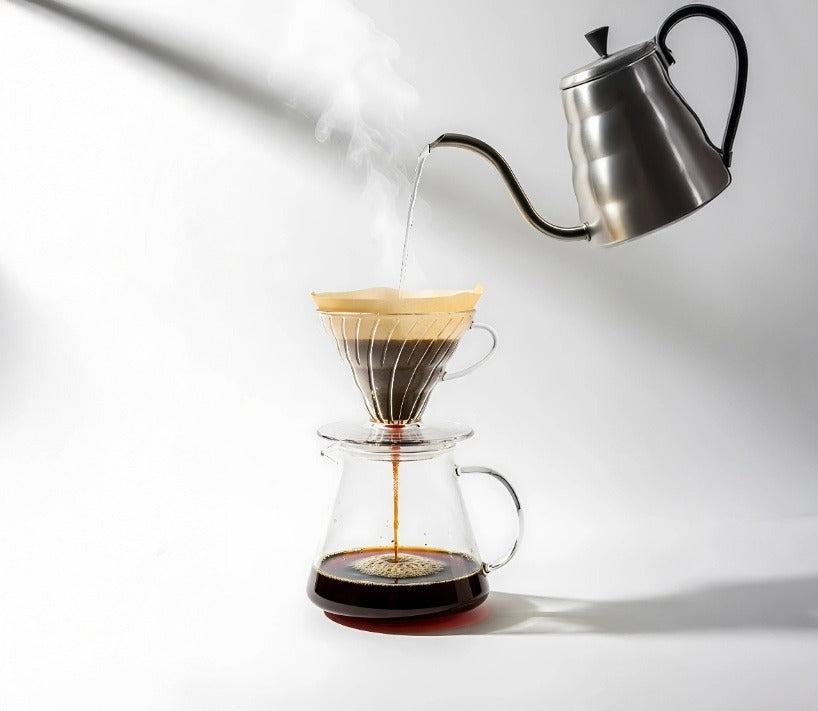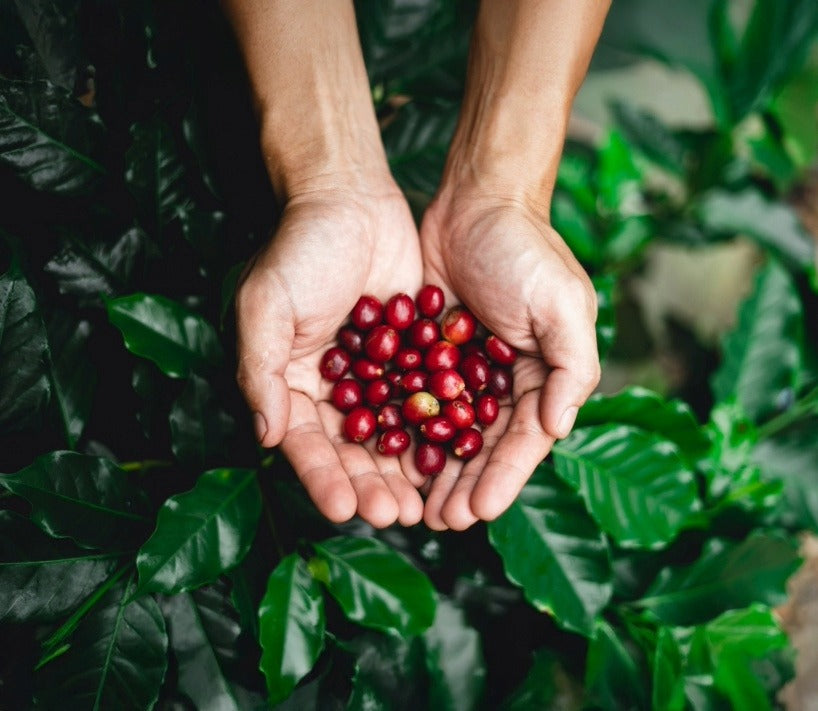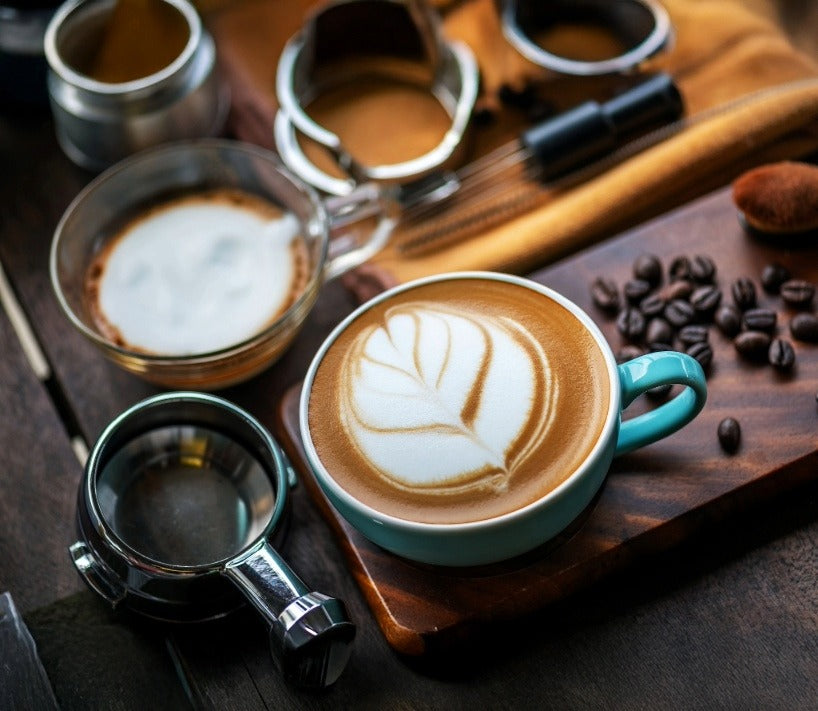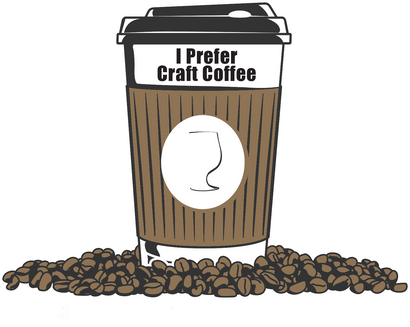Best Craft Coffee at Home: High-Scoring
August 07, 2025 4 min read
Best Craft Coffee at Home: Why High-Scoring Air-Roasted Beans Turn Your Morning Into Magic
"Whoa, Why Does My Mug Taste Like a Mud Puddle?”
Picture this: It’s 7 a.m., you’re still wearing your superhero pajamas, and you take a slurp of supermarket coffee that tastes like burnt pencil shavings. Your tongue actually says, “EW!” out loud.
But—plot twist!—there’s a secret level in Coffee-Land called best craft coffee at home where the beans score 85 points or higher on the official Specialty Coffee Association (SCA) cupping sheet. Anything 85–89.99 is graded Excellent (a.k.a. the valedictorian of beans) Now crank the flavor dial even harder by air-roasting those over-achieving beans. Hot air keeps them floating like popcorn, roasting evenly and holding onto all their juicy fruit notes instead of tasting like campfire smoke We Love Coffee.
Instant coffee? Yeah, that stuff’s often bulk-roasted, sprayed dry, and sprinkled with preservatives and artificial flavors so it can live on a shelf longer than a houseplant JavaPresse Coffee Company. No wonder it’s bitter.
So grab your imaginary backpack—we’re going on an olfactory field trip to Flavor Town.
“Secret Map to Flavor Town (Why 85+ Air-Roasted Rules)”
1. What “85+” Really Means
The SCA grades coffee on a 100-point scale. Anything 80–84.99 = “Very Good,” 85–89.99 = “Excellent,” 90+ = “Outstanding.” (90+ coffees are like diamond-studded sneakers—amazing but extremely pricey.) That 85–89.99 pocket is the sweet spot: mind-blowing nuance without auction-level price tags Wikipedia.
2. How Air-Roasting Keeps the Magic Inside
Traditional drum roasters slam beans around a hot metal barrel. They get dings, fractures, and sometimes a smoky after-taste. Air roasters, by contrast, float beans on hot air like they’re riding a bouncy castle. Lower, steadier heat keeps delicate compounds (think blueberry, jasmine, or mango-gummy-bear vibes) alive We Love Coffee. Bonus: less chaff, fewer emissions, and your kitchen won’t smell like a campfire.
3. Nuance That Makes Eyes Pop
Ever tasted a naturally processed Ethiopian that shouts “strawberry Pop Rocks”? Take that, then give it a college scholarship. High-scoring, air-roasted versions hit your nose first—floral fireworks—then your tongue catches layer after layer: berry, honey, maybe a sneaky note of lime. You’ll set down the mug and yell, “Mom, my tongue’s doing jazz hands!”
4. Commercial Coffee’s Kryptonite
• Mass roasting at scorch-level temps = uniform dark color but also charred oils.
• Preservatives & flavoring agents help products survive global shipping and dusty store shelves JavaPresse Coffee Company.
• Price over quality means blending lower-grade lots, sometimes with defective beans (ew). Result? One-note bitterness that needs sugar, cream, and sheer willpower.
Quick-Look Comparison
| Coffee Type | SCA Score | Roast Method | Flavor Profile | Typical Price | After-taste |
|---|---|---|---|---|---|
| High-Scoring Air-Roasted (85+) | 85-89.99 | Fluid-bed hot-air | Vibrant, layered fruit & florals | $$ | Clean, sweet |
| Competition Grade (90+) | 90-100 | Usually bespoke air or precision drum | Jaw-dropping, rare microlot nuance | $$$$ | Lingers like fairy dust |
| Commercial “Premium” Grocery Coffee | < 80 | Dark drum roast | Bitter, smoky, flat | $ | Ashy, dry |
| Instant/Pod Coffee | n/a | Spray-dry or flash roast | Artificial flavor + additives | $ | Metallic, fast-fading |
(Pricing legend: $ = budget, $$$$ = mortgage a kidney)
“How to Unlock Morning Magic (No Golden Ticket Required)”
-
Read the Label Like a Detective. Look for Q-grade 85+, crop year, and roast date (fresh = flavor fireworks).
-
Seek Out Air-Roasted Roasters. Many independent outfits shout about air roasting on their bags or websites. When you order coffee online, scan for phrases like “fluid-bed” or “hot-air roasted.”
-
Buy Small, Brew Fresh. Beans peak 4–14 days after roast. Score 250-g bags via best coffee bean delivery services so you always drink in the flavor window.
-
Grind Just-Before Brewing. Grandma’s blade grinder is a flavor shredder; a burr grinder keeps all those epic strawberry-jam notes intact.
-
Choose Light-to-Medium Roasts for Nuance. Dark roasting shouts “charcoal.” Light roasts whisper secrets: “Hey buddy, there’s mango candy in here.”
-
Experiment and Log Tastes. Use a simple notebook or an app. Soon you’ll know if you’re Team “floral Kenyan” or Captain “chocolate-peanut butter Honduras.”
-
Share the Magic. Brew a cup for a friend who thinks coffee “just tastes like coffee.” Watch their eyebrows sky-rocket. Welcome to the club.
FAQ — Best Craft Coffee at Home
What does “air-roasted” mean?
Beans roast while suspended on hot air, not against a hot metal drum, resulting in cleaner, more even flavor.
Is 85+ coffee the same as competition coffee?
Nope. 85–89.99 = “Excellent” specialty. Competition coffees usually score 90+ and cost a small fortune.
Does high-scoring coffee always cost more?
t’s pricier than grocery blends but far cheaper than 90+ auction lots. Think fancy-pizza money, not diamond-ring money.
How do I find the freshest craft coffee online?
Look for roasters who post roast dates, ship within 24 hours, and offer **best coffee online free shipping** when possible.
Can I still use milk and sugar?
Sure, but taste it black first—you might find it’s naturally sweet like fruit juice.
High-five! You now hold the treasure map to best craft coffee at home. Next time someone hands you a bitter cup, you can smile, shrug, and say, “Nah, I like my mornings magical.”
Also in Best Coffee To Buy Online Education

Biggest Mistake With Pourover Coffee: It's Your Beans
January 02, 2026 3 min read
Learn how to brew the best pourover coffee at home with the best tasting craft coffee online. Remember, the best coffee to drink at home starts with the freshest craft coffee online, not the bargain bin beans at your local supermarket.

Specialty Roast Coffee Beans Online: What’s the Deal, Really?
January 01, 2026 4 min read
You'll learn what specialty roast coffee beans online actually means, and why it translates to the best tasting craft coffee at home.

High-Score Coffee Beans Online: Why 85+ Points Actually Matter
December 31, 2025 3 min read
Learn why the best tasting craft coffee online is high-scoring specialty coffee that tastes better and how to choose the right beans online. Order coffee online from a roaster you trust.
